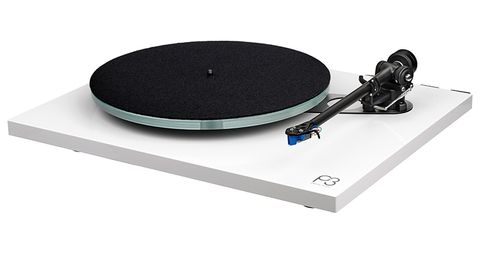For audiophiles of a particular generation, the term “direct-drive” conjures up images of a whole generation of cheap, poor Japanese turntables that swamped mass market retailers like Laskys and Comet in the late 1970s and early 1980s. The British hi-fi press did not have much good to say about them at the time. There was never any doubt that they measured better – most had vanishingly little wow and flutter – but this wasn’t the only issue; many DDs had a slew of other design flaws.
In the early 1990s, I rediscovered direct-drive turntables; due to my time in Japan, British-made high-end belt-drives were too expensive, so I settled for a Technics SL-150 purchased from a junk shop. To my amazement, it was surprisingly good in certain areas, and I quickly found myself experimenting with better mats, isolation systems, and wiring in an attempt to improve it further. This convinced me that the direct-drive mechanism was a strength, not a flaw, as I had been led to believe, and I began to collect more cards in order to learn more…
Around ten years ago, audiophiles in the United Kingdom began to adopt the Technics SL1200. Stewart Wennen and I both wrote articles in Hi-Fi World magazine praising the deck, each of us having made significant changes to it with amazing results. In short, following its inexpensive OEM tonearm, the SL-1200’s platter and plinth were and remain superb; the subchassis, motor, and control unit were and remain excellent. Wouldn’t it be fantastic if someone cannibalized one and utilized it as the foundation for a full-fledged high-end hi-fi turntable, I pondered? Several companies expressed interest, but Inspire Hi-Fi was the first to accomplish it, with the Monarch in 2009.
The first thing that strikes you about this deck is that its Technics ancestry isn’t immediately apparent. Unlike the metal and rubber plinth on the SL-1200, this one is made of solid walnut wood and has a horizontal billet of 6mm aluminium running through it. At the far left hand corner, there’s a strange ‘gearstick’ that turns the motor on and changes the speed. This is fed by an outboard power supply providing 21V via silver-plated lockable DIN sockets and plugs, from a large toroidal mains transformer with Fidelity Audio capacitors and voltage regulator.
The armboard is made of aluminium billet and is designed for tonearms with a diameter of twelve inches, however nine inch installation is also available. A new bearing is fitted, its spindle is rehoused in a phosphor bronze sealed housing manufactured to fit the individual Technics’ spindle. The motor control circuitry has been modified using a quartz chip with higher specifications. The platter is a sandwich of two massive billets of aluminium and a layer of Sorbothane in the middle. The feet are machined from aluminium with inbuilt shock absorbers and come with a hefty steel puck.
The Monarch has shown to be a fantastically capable product. It is head and shoulders above a Technics – indeed it’s still quite a way past even a highly tweaked SL-1200 – showing all its good points with few of its failings. If you’re familiar with the Technics, you’ll know that the soundstage may be a little tonally bright, with a somewhat harsh upper midband and a lack of depth perspective. The Monarch is a lot smoother tonally and has a lot more elegance in general. Brass, for example, has less scream, and the presence region sounds less warmly illuminated – but it’s still highly precise and piercing.
There are plenty of advantages to the SL-1200. This deck has a wonderful rhythmic quality that powers things along like a steamroller; Garrard 301 and 401 owners will know what I’m talking about! The music I’ve heard from precious-few belt drives has a sense of authority and unflappability. The bass is fantastic; it’s incredibly tight and expressive, as well as highly tuneful and well-integrated with the rest of the mix. Treble is superb too, sparkly and crisp and incredibly finely etched – another sign of a direct drive turntable done properly.
The Monarch doesn’t quite have the thumping metronomic sound of the Technics; the tweaks seem to have ironed this out along with all of its problems. As a result, it becomes a significantly more nuanced and expressive design, excellent in many genres of music but nearly unrivalled in rock and dance. If you carefully partner it, you’re unlikely to get a lower score than a SME at three times the expense, for example. The stereo sound staging is the one evident flaw; it’s fine, but the Michell GyroDec and Orbe do a better job. In comparison to the unreconstructed enthusiasm that the Inspire deck brings to the party, they sound a touch hazy and over polished in other ways.
This turntable, which cost £3,970 when it was first released seven years ago, is still a fantastic turntable that is more musically convincing than virtually every other turntable on the market. This is the deck for you if you want a simple, plug-and-play turntable that delivers accurate, speed-stable sound without the hassle of belts. In terms of musicality, it outperforms every belt drive turntable I’ve heard, regardless of price. You might say the Inspire Monarch is about the closest you can get to hi-res digital audio, played in an analogue form – it’s devoid of coloration, instability and noise yet is extremely powerful and revealing in a way no digital ever is. At or near the price, there’s almost nothing that compares.







